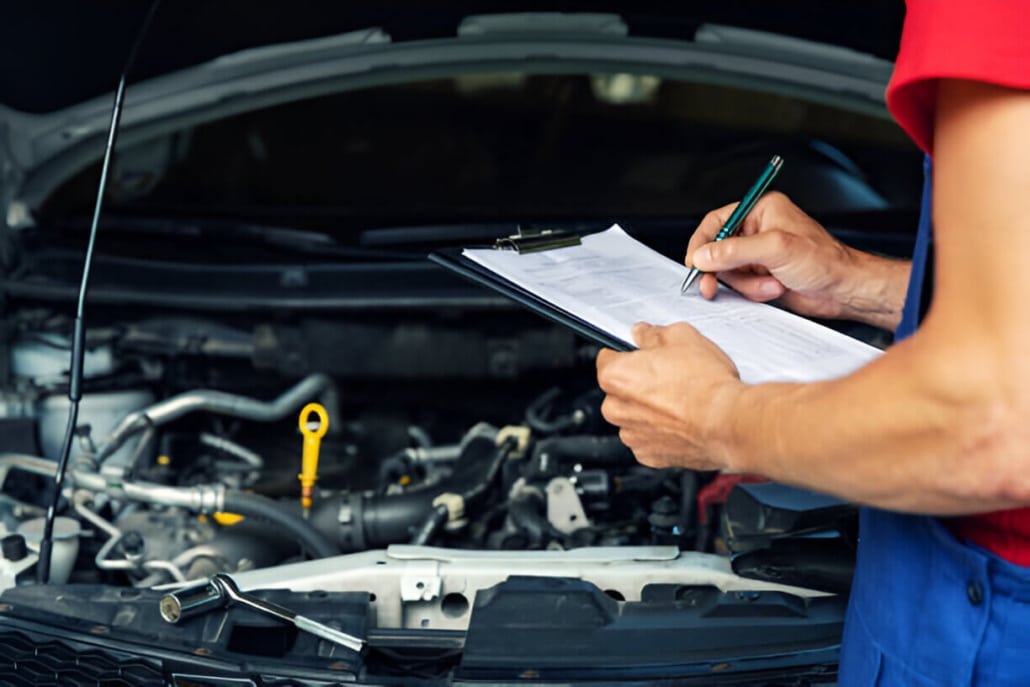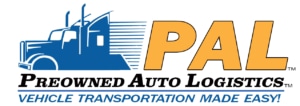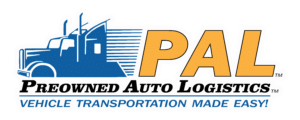Essential Steps to Get Your Car Ready for Hassle-Free Auto Transport
Preparing your car for auto transport is your first step in making the process easy and hassle-free. A prepared car runs a lower risk, speeds the shipping process along, and assures that the vehicle reaches safely and soundly to the destination. Preparing your car means respecting your vehicle and the people who will transport it.
Preowned Auto Logistics- a name you can trust in the auto transport business- will try to deliver your vehicle to the desired location safely. Their knowledge guarantees that your car will arrive in the same condition it left if you take the key steps to prepare it. This guide will provide a clear, actionable checklist to help you prepare your vehicle and avoid delays, damages, or unforeseen complications while in transit.
Why Vehicle Preparation Matters
Preparing pre-transportation will significantly impact the safety and efficiency of the process. A clean and mechanically sound vehicle with well-documented transport conditions minimizes the possibility of damage and delays. This enables carriers to deal with safe transportation without preempting issues they could have validated before departure. Preparation also allows safe loading and unloading; the airline can now navigate a slimmer path within the vehicle.
For instance, loose items pose hazards during transit and a clean exterior aids in the inspection. Documenting the vehicle’s condition protects you and the carrier by giving a standard comparison at pickup and delivery. By taking time in preparation, you ensure a hassle-free experience, keep the vehicle safe, and comply with carrier safety standards, saving time and avoiding disputes.
Step-by-Step Vehicle Preparation Checklist
Follow this detailed checklist to prepare your car for transport, ensuring every aspect is addressed for a hassle-free journey. Each step is designed to protect your vehicle, simplify the carrier’s job, and provide peace of mind.
Clean Your Vehicle Deeply
First, take the initial step of washing the car’s exterior for a clear view of its condition. Dirt, grime, or even road salt can easily block scratches, dents, or any imperfections on the surface, thus making an inspection quite complicated! The sparkling exterior will allow you and the carrier to mark the existing condition of the vehicle accurately before transportation.
Preferably, use a gentle car wash soap and a microfiber cloth to wash the vehicle to prevent scratches. Try to put more effort into scrubbing the hood, bumpers, and wheel wells.
Inside, vacuum the interiors to clear out any debris. Remove personal items from inside the cabin, trunk, and glove compartment. Keeping the inside clean also prevents anything that might move during transit and communicates to the carrier that the vehicle is ready to be handled by professionals. Transport can proceed smoothly since both parties have unobstructed access to evaluate the car.
Document the Condition of the Car
Immediately before release, detail the car’s current state, over and above pictures, for your and carrier’s protection. Snap good photos of each side, front, back, driver’s side, and passenger’s side, in good lighting to make the details visible. Get close-up shots of every pre-existing damage, whether scratches, dents, or paint chipped off, to avoid arguments later.
Whenever possible, stamp the date and time on the photos to strengthen the validity of your records. Physically record the car mileage on the odometer and note anything faulty, like warning lights (considered mechanical) or just half a dozen little things. Pass this documentation to the carrier for reference at the time of pickup.
The documentation will probably be the basis for the Bill of Lading inspection report. The effect of thorough documentation is to confirm accountability for everyone by establishing a condition documented for comparison with the state of the car at delivery.
Perform basic maintenance
Basic maintenance ensures your car is road-ready for transport, reducing risks during loading, transit, and unloading. Check fluid levels, including oil, coolant, brake fluid, and windshield washer fluid, topping off as needed to prevent mechanical issues. Inspect tire pressure to confirm it meets the manufacturer’s recommendations, as properly inflated tires support safe handling on the transport trailer.
Verify that the battery is fully charged and securely fastened, as a dead battery can delay loading or unloading. Examine the undercarriage and engine bay for leaks, such as oil or coolant, and address any issues with a mechanic before transport. A mechanically sound vehicle minimizes disruptions, allowing carriers to focus on secure transport rather than troubleshooting preventable problems. This step also reassures you that the car is in good shape for its journey.
Secure or remove loose accessories.
Loose or external accessories can become hazards during transport, so secure or remove them to prevent damage or loss. Detach add-ons like spoilers, bike racks, roof antennas, or aftermarket lights, as these can catch the wind, vibrate loose, or collide with other vehicles on the trailer. If an accessory, such as a fixed antenna, cannot be removed, wrap it in protective padding and inform the carrier. Fold in side mirrors to reduce the car’s width, and retract any telescoping antennas to minimize exposure.
Secure loose parts like floor mats or spare tires inside the vehicle to prevent shifting. Removing or securing accessories streamlines loading and unloading, reduces the risk of damage to your car or others, and ensures compliance with the carrier’s safety standards. Preowned Auto Logistics emphasizes this step to maintain a safe vehicle transport environment.
Reduce fuel level
Keep the fuel tank at approximately one-quarter full to balance safety and practicality. A nearly empty tank reduces the vehicle’s weight, which lowers fuel costs for the carrier and minimizes risks in case of an accident, as less fuel reduces fire hazards. However, a small amount of gas, enough for short drives during loading and unloading, is necessary to avoid delays.
For most cars, a quarter tank provides sufficient fuel for these purposes without adding unnecessary weight. Check your fuel gauge before pickup and drive the vehicle or siphon excess fuel if needed, following local safety regulations. This step demonstrates consideration for the carrier’s efficiency and aligns with industry best practices for auto transport, ensuring a smoother process for all parties involved.
Disable alarms and toll tags
Active alarms or toll tags can cause disruptions during transit, so deactivate them before transport. A car alarm that triggers during loading, unloading, or transit can delay operations, disturb carriers, or drain the battery. Consult your vehicle’s manual to temporarily turn off the alarm system, or have a mechanic assist if needed.
Similarly, remove or deactivate electronic toll tags, such as E-ZPass or FasTrak devices, to prevent unintended charges as the car travels through toll booths on the transport trailer. If deactivation isn’t possible, remove the tag and store it separately. Inform the carrier of any disabled systems to avoid confusion. This step prevents unnecessary interruptions, ensures a professional transport experience, and avoids unexpected costs, keeping the focus on safe delivery.
Remove personal belongings
Clear all personal belongings from the vehicle, as carriers are not liable for items left inside. Remove valuables, electronics, documents, and everyday items like sunglasses, chargers, or spare change from the cabin, glove compartment, and trunk. Personal items can shift during transit, potentially damaging the interior or becoming lost. Carriers, including Preowned Auto Logistics, prohibit transporting personal goods due to weight restrictions and insurance limitations.
Keep essential documents, such as registration and insurance papers, in a separate folder or digital format for easy access during pickup and delivery. Emptying the car reduces risks, complies with carrier policies, and simplifies inspections, ensuring a straightforward transport process. A clutter-free vehicle also projects professionalism, making the carrier’s job easier and more efficient.

What to Expect During Pickup and Delivery
Pickup and delivery are key moments in auto transport, ensuring your vehicle’s safe transfer. Preowned Auto Logistics follows a straightforward inspection and documentation process to guarantee transparency.
Steps
Vehicle inspection and Bill of Lading
- Inspect the car with the driver at pickup, noting pre-existing damage (e.g., scratches, dents) on the Bill of Lading.
- Reference your pre-transport photos and notes for accuracy.
- At delivery, repeat the inspection, comparing the car’s condition to the document.
Walkthrough with the driver
- Conduct a thorough walkthrough at pickup, pointing out any damage or concerns.
- Ensure the driver records all observations, aligning with your documentation.
- At delivery, verify that no new damage occurred during transit.
Signature and Confirmation
- Review and sign the Bill of Lading at pickup to authorize transport, keeping a copy.
- At delivery, sign to confirm the car’s condition matches the document.
- Note any discrepancies before signing and contact the transport company if needed.
Tips
- Be present for inspections to ensure accuracy.
- Keep your pre-transport documentation handy for reference.
- Communicate promptly with the carrier if issues arise.
How Preowned Auto Logistics Supports You
Preowned Auto Logistics delivers exceptional support for a seamless auto transport experience, guiding you from initial booking to final delivery with expertise and care. Their dedicated team, flexible service options, and transparent communication create a reliable process that prioritizes your vehicle’s safety and peace of mind.
Expert team guidance
A committed team of professionals assists you at every step, offering clear answers to questions about vehicle preparation, scheduling, or transit details. For example, if you need guidance on securing loose accessories or documenting your car’s condition, they provide practical advice to prevent complications. This hands-on approach eliminates confusion, allowing you to focus on other tasks while they manage the logistics. Their personalized support builds confidence, making the transport process straightforward and stress-free.
Flexible service options
Flexibility defines their service offerings, catering to varied needs. Preowned Auto Logistics provides door-to-door transport, where carriers pick up and deliver your vehicle near your specified locations, perfect for convenience. Alternatively, terminal-to-terminal service offers a budget-friendly option, with drop-off and pickup at designated facilities. Both methods prioritize safety and efficiency, and the team helps you choose the best fit based on your schedule, budget, and location. This adaptability aligns the service with your unique circumstances, whether moving cross-country or shipping a speciality vehicle.
Transparent communication and security
Transparency and security form the backbone of their approach. Preowned Auto Logistics maintains open communication, providing regular updates via phone, email, or online tracking tools to inform you about your vehicle’s status. They partner exclusively with insured carriers, protecting your car against unexpected incidents during transit. This blend of clear updates and dependable coverage fosters trust, so you know your vehicle is in capable hands. If delays occur due to weather or road conditions, the team promptly notifies you, adjusting expectations to maintain reliability.

Final Tips for a Smooth Transport Experience
A few strategic steps can enhance your auto transport process with Preowned Auto Logistics, helping you avoid delays and streamline the journey.
Book early
Book early, especially during peak seasons like summer or year-end holidays when demand spikes due to relocations and student moves. Reserving your slot two to four weeks in advance secures preferred pickup and delivery dates, preventing scheduling conflicts. Early booking also gives you time to prepare your vehicle thoroughly, following the checklist for cleaning, documentation, and maintenance.
Stay reachable
Stay reachable on pickup and delivery days. Carriers operate on tight schedules, and prompt communication facilitates smooth handoffs. Share accurate contact details with Preowned Auto Logistics and keep your phone accessible for last-minute confirmations or adjustments. If you can’t be present, designate a trusted representative to handle inspections and sign the Bill of Lading. Availability minimizes delays, keeping the process on track.
Monitor updates
Stay informed with real-time updates from Preowned Auto Logistics. Their tracking tools and communication channels provide transit milestones and alerts about potential delays. Regularly check emails or online portals, and contact the team with any questions. Staying proactive keeps you in control, ensuring a confident and predictable transport experience.
Conclusion
Preparing your car for transport sets the stage for a safe, efficient, and stress-free journey. By cleaning the vehicle, documenting its condition, performing maintenance, securing accessories, reducing fuel, disabling alarms, and removing belongings, you protect your car and simplify the carrier’s task. Preowned Auto Logistics enhances this process with expert support, flexible options, and transparent communication, delivering reliable service at every step. Trust their dedicated team to handle your vehicle carelessly, providing a professional transport experience that prioritizes your peace of mind.




